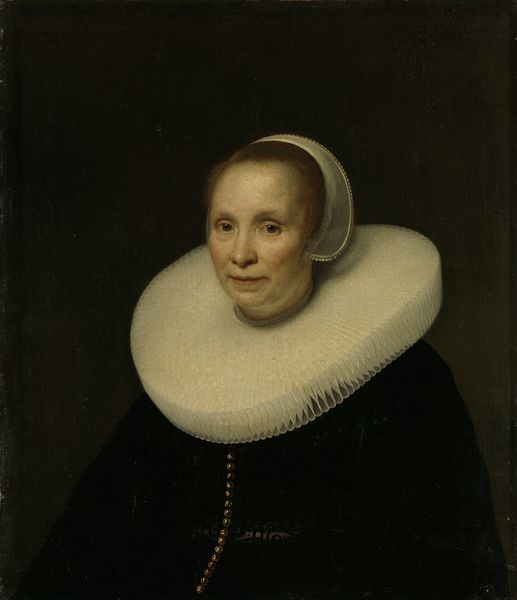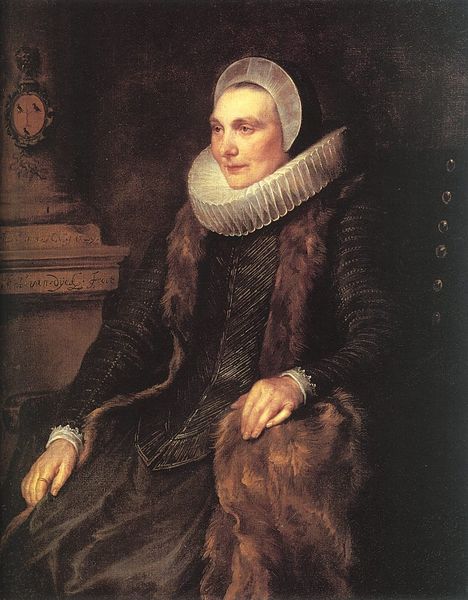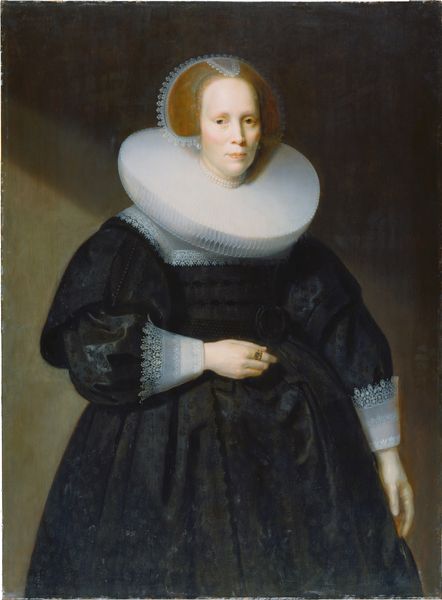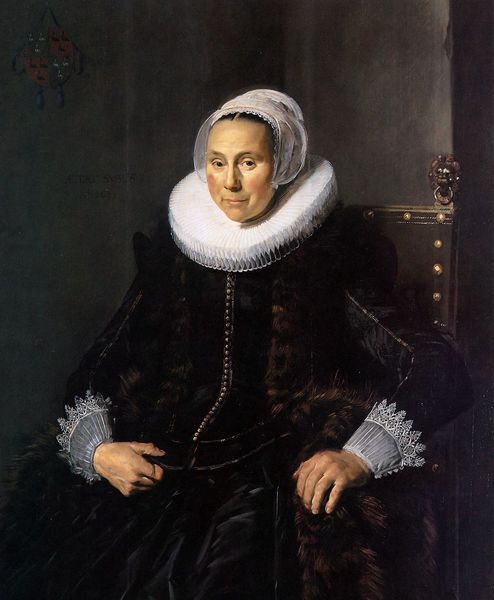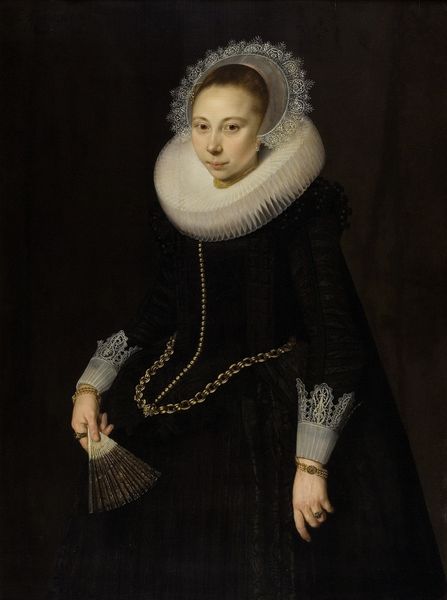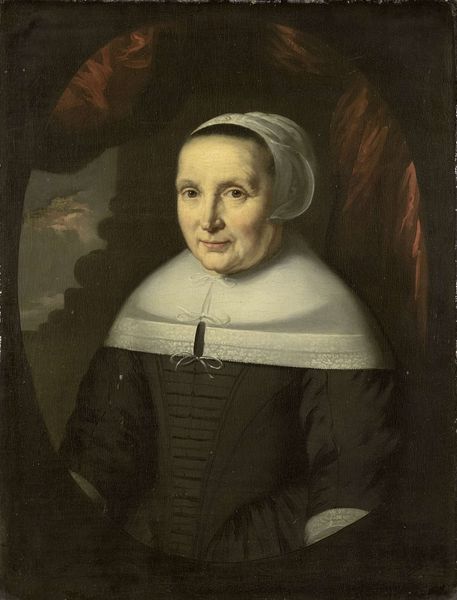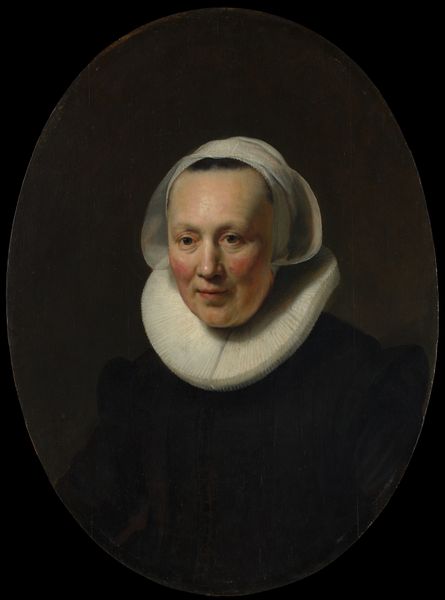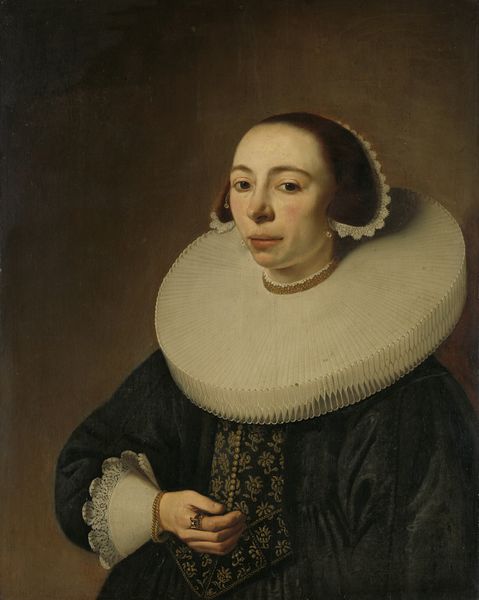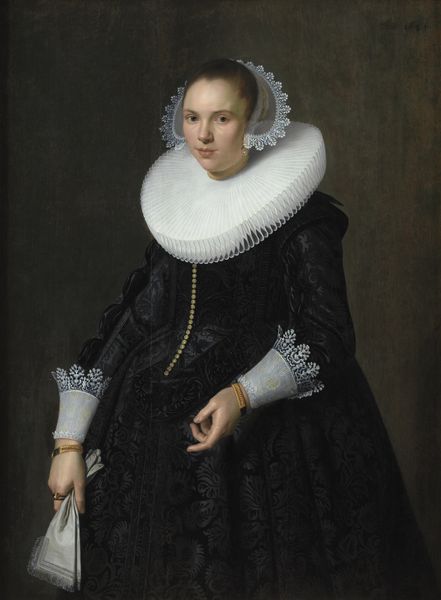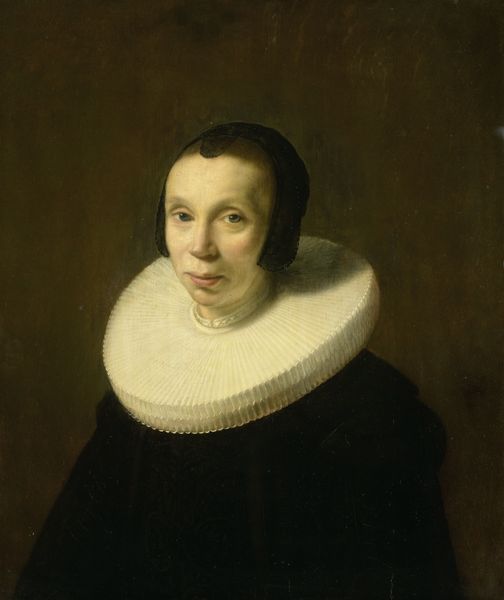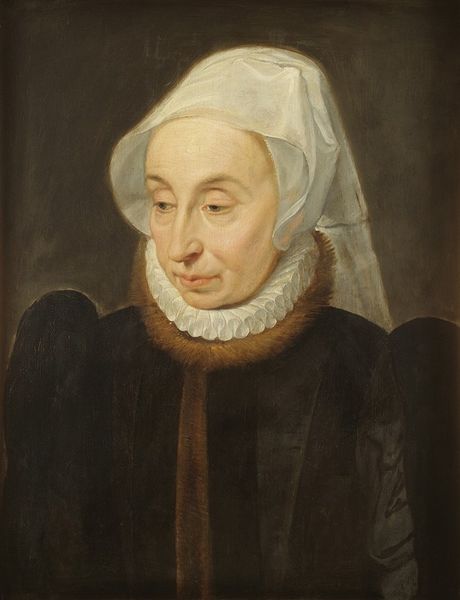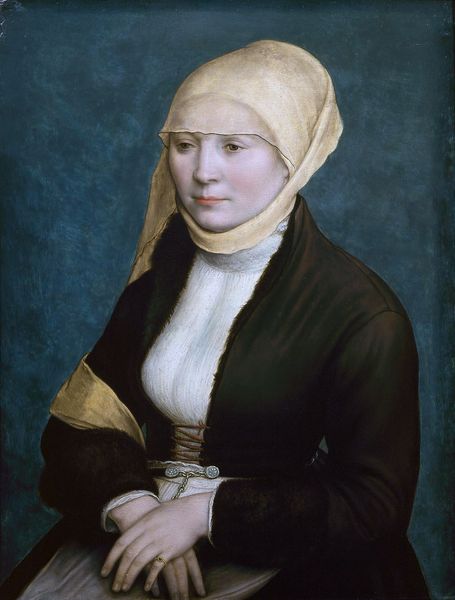
painting, oil-paint
#
portrait
#
baroque
#
dutch-golden-age
#
painting
#
oil-paint
#
figuration
#
realism
Dimensions: 20 x 16 1/2 in. (50.8 x 41.91 cm) (panel)
Copyright: Public Domain
Jacob van Loo painted this "Portrait of a Young Girl" on a panel at an unknown date. Notice how the young woman delicately holds a fan. This simple object speaks volumes. Once merely functional, fans evolved into potent symbols of status, decorum, and even secret communication. In the courts of Europe, the language of the fan was well understood: each gesture, each position held a specific meaning. The fan is reminiscent of the peacock feather, which once held sacred connotations in ancient cultures before becoming a symbol of luxury. This transformation highlights a complex interplay between the sacred and the secular, as symbols are stripped from their original contexts and imbued with new meanings. These shifts reflect our human inclination to project our desires and fears onto the material world. This seemingly innocuous accessory engages us on a deeper, subconscious level, whispering tales of societal shifts.
Comments
minneapolisinstituteofart almost 2 years ago
⋮
Portrait paintings were a common household item in the 1600s, a period known as the Dutch Golden Age. These portraits would stay within the family, passed down for generations, documenting the life and clothing of ancestors. In this painting, the young woman is dressed in a plain black gown, laced bodice, headpiece, and a collar typical of the 1650s. Her identity is unknown, though she was clearly a lady of a comfortable class in Amsterdam, the capital of the Netherlands. Each Dutch city during the Golden Age had at least one counterfeiter (portrait painter) to support the era’s high demand for portraitures.
Join the conversation
Join millions of artists and users on Artera today and experience the ultimate creative platform.

